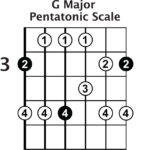For guitarists aspiring to add vocals to their playing, or singers seeking to accompany themselves on guitar, the journey begins with mastering a crucial skill: singing and playing guitar at the same time. Whether you are already proficient in one or both, the path to combining them is a rewarding endeavor that unlocks a new dimension of musical expression.
As a seasoned musician who started with guitar and later developed vocal prowess, I understand the initial challenges. Many find coordinating these two seemingly separate musical actions daunting. It’s a common hurdle, even for experienced players when faced with complex musical passages. However, with the right approach, any pattern, regardless of its complexity, can be learned and mastered.
Unlocking the Synchronization Between Singing and Guitar Playing
The primary obstacle in singing and playing guitar simultaneously lies in synchronization. It’s about training your brain and muscles to coordinate two distinct musical tasks. The key is to learn how to harmonize your guitar playing with your vocal melodies, creating a cohesive and engaging performance.
While it may seem challenging initially, combining singing and guitar is often more attainable than you might think. Some individuals may even find it intuitive, especially when tackling simpler songs like campfire sing-alongs in common time signatures like 4/4.
Think back to your early days of learning guitar. Remember the initial nervousness, the struggle to position your fingers correctly on the frets, the tension, and the near-impossible task of coordinating your fretting and picking hands while maintaining rhythm and hitting the right notes? Learning to sing and play guitar simultaneously shares a similar learning curve. Initially, the guitar and vocals may feel disconnected, each operating independently.
This article, the first in a series on “how to sing and play guitar at the same time,” focuses on breaking down the process of learning an easy song in 4/4 time. We’ll concentrate on songs without complex syncopation, guitar solos while singing, or intricate instrumental melodies. We’ll achieve this through a structured 4-step approach:
Step 1: Guitar Mastery – Building the Foundation
Just as you would approach learning any new song on guitar, the first step is all about solidifying your guitar part. If you’re a student of mine, you’re familiar with my method. If not, use whatever method works best for you to learn the guitar part independently.
-
Primary Objective: Memorize the song’s structure, chord progressions, and rhythmic patterns on the guitar. Whether you are learning the entire song or a specific section, focus on internalizing the guitar part completely.
-
Secondary Objective: Practice the guitar part until it becomes automatic, almost like muscle memory. Aim to play it effortlessly, without conscious thought. This “autopilot” stage is crucial. Depending on your skill level, dedicate sufficient time to this step. I recommend playing the entire song (or section) at least 5-6 times flawlessly before moving on to the next step.
Step 2: Lyric Immersion – Understanding the Vocal Narrative
With the guitar part becoming second nature, the next focus shifts to the vocal component.
-
Crucial Step: Learn the lyrics thoroughly before attempting to sing. This cannot be overstated. Read the lyrics multiple times, striving to understand their meaning and narrative. Research suggests that comprehension significantly enhances memorization. Mastering the lyrics, including correct vowel pronunciation, will expedite the process, especially when tricky notes fall on specific vowels. This prevents spending unnecessary time correcting lyrical errors later.
-
Mental Soundscape: By this stage, you should have a basic understanding of the song’s melody and vocal delivery. You’ve likely listened to the song multiple times, played the guitar part repeatedly, and absorbed the lyrics. This creates a mental framework for the singing to come.
Step 3: Vocal Independence – Finding Your Voice
Now, it’s time to unleash your voice!
-
Vocal Autopilot: Similar to Step 1 with the guitar, practice singing the song (or section) independently until you can sing it on autopilot. Sing it at least 5-6 times until the melody and rhythm are ingrained, and you can hit the notes instinctively, without hesitation. Establish vocal confidence before reintroducing the guitar.
-
Rhythmic Connection: Understand how the vocal rhythm aligns with the song’s beat. Practice vocalizing the lyrics while tapping or strumming quarter notes (down strums on beats 1, 2, 3, and 4). This helps identify which words fall on the beat and which are syncopated or off-beat. Using a metronome or simple quarter note strumming on the guitar can aid in this rhythmic mapping.
Step 4: Harmonious Union – Bringing Guitar and Vocals Together
Initially, we separated guitar and vocals for focused learning. Now, it’s time to integrate them. The crucial realization at this stage is that both guitar and vocals are driven by the same rhythmic groove. They are not independent entities but rather complementary parts of a unified musical expression. Instead of viewing them as separate tasks, consider how your singing can enhance your guitar playing and vice versa. Think of your guitar as supporting your vocals and your vocals as adding another layer to your guitar performance.
The Moment of Truth: Sing and Play! Attempt to sing and play simultaneously. Record yourself and critically analyze the recording. Identify areas of struggle. Is the issue in your strumming rhythm? Vocal pitch or timing? Or both? Pinpoint the specific mistakes. Practice those sections in isolation, then record again and compare your progress.
Repeat this process of practice, recording, and analysis until your performance approaches your desired level of proficiency.
Remember, this is just Part 1, focusing on foundational techniques for simple songs. Future articles in this series will delve into more advanced techniques and address complexities.
Final Thoughts: Patience and Persistence
Mastering singing and playing guitar concurrently isn’t magic; it demands patience and consistent practice. Like any multitasking activity, especially one that involves artistic expression, it requires dedicated effort.
It might take time, but with persistent practice, combining singing and guitar will become as natural as playing guitar alone once was. Once you achieve this skill, recognize that you’ve joined a relatively small group of guitarists worldwide who can perform both vocals and guitar at a professional level.
About the Author:
Jack Haddad is a guitarist, singer/songwriter, performer, and guitar instructor. He is the director of JHGuitarSchool in Kaslik-Beirut, Lebanon. For those in Lebanon interested in elevating their guitar skills, click here for the best guitar lessons in Lebanon.


